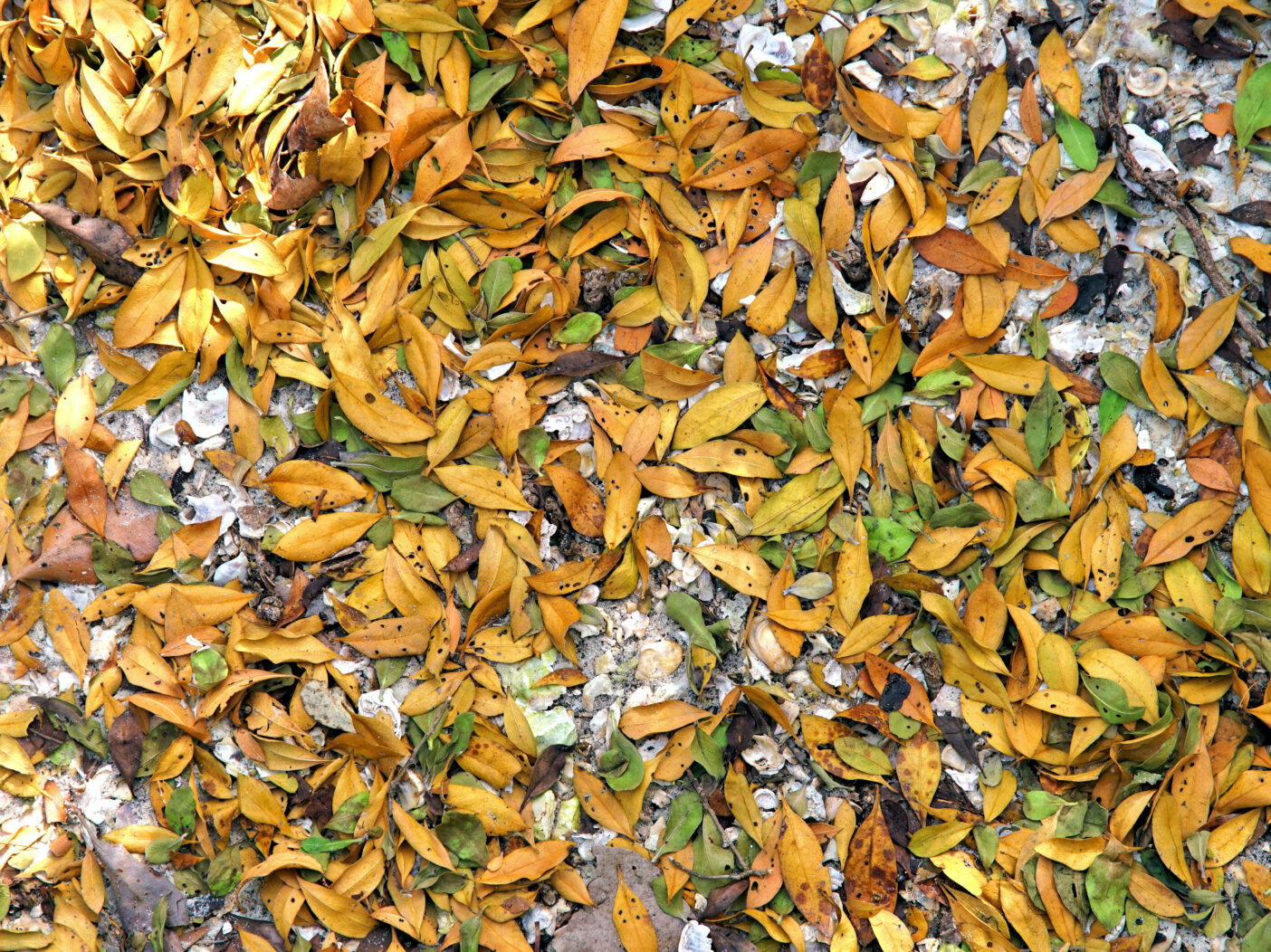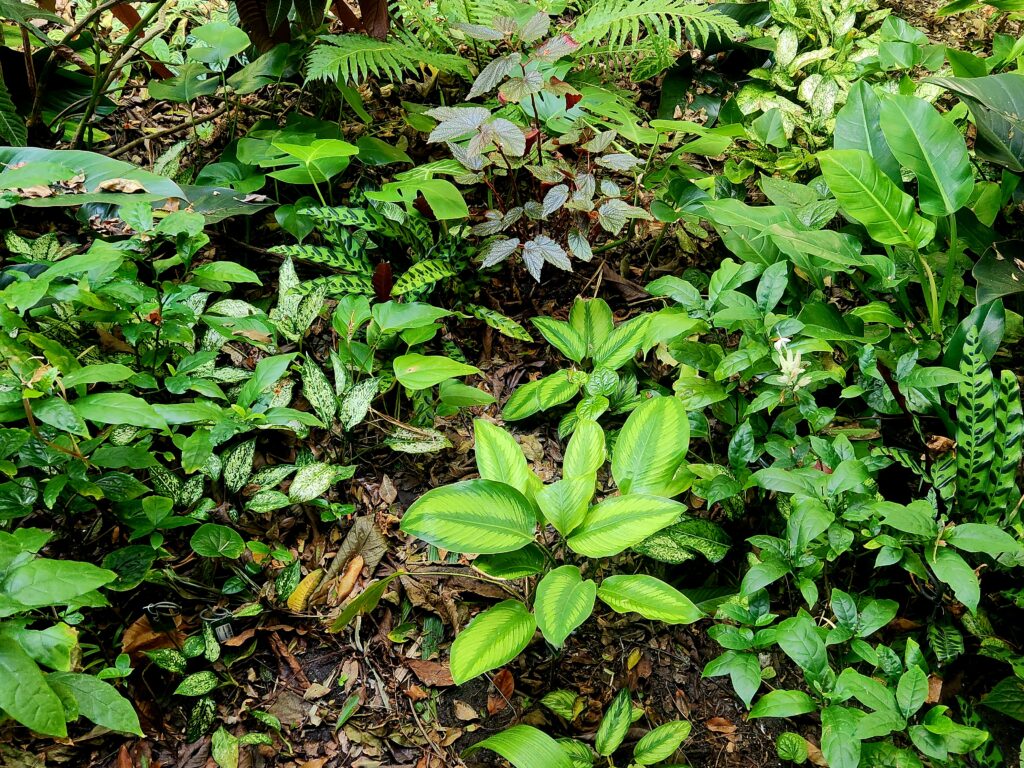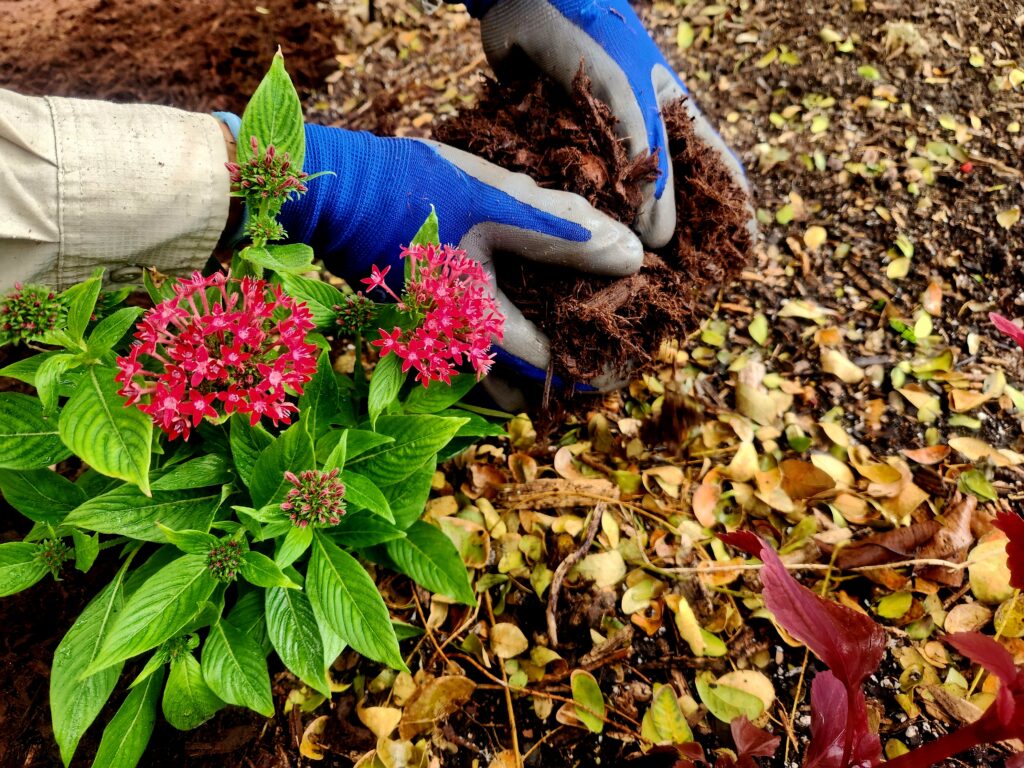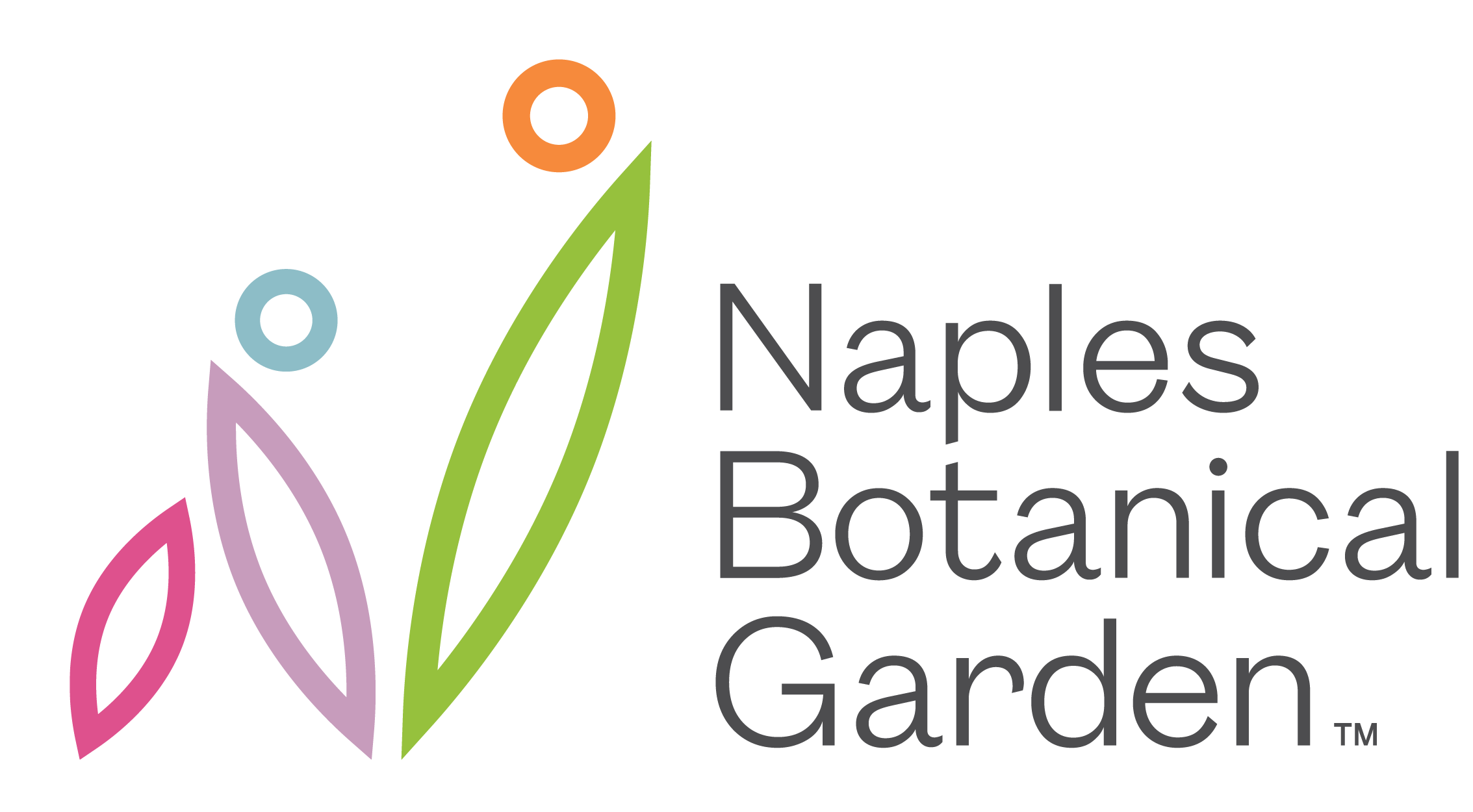
Between the natural shedding that occurs in fall—one of several times a year here in the tropics—and trees’ reactions to Hurricane Milton, you might notice leaves raining on your yard.
It’s tempting to rake, bag, and dump them, but we’d like to propose something else: Remove them from your grass and scatter them in your landscape beds and potted plants.
“Leaf litter is the natural way plants get nutrients,” explains Vice President of Horticulture Brian Galligan. Trees absorb nutrients through their trunks and deposit them in their foliage. Allowing leaves to decompose returns those substances to the soil.
This is especially important in Southwest Florida where the soil tends to be sandy and nutritionally poor, adds Director of Collections Nick Ewy.

Using leaves for nutrients saves money by reducing the need to buy fertilizer. Additionally, favoring low-concentration, natural nutrient sources over chemical ones protects the region’s water quality. That’s because the high amounts of nitrogen and phosphorus in commercial fertilizers can prompt the growth of algae, potentially harming both marine and human life. (For more information on the relationship between fertilizer and algae and how you can help, see Protecting Water with Plants: A How-To Guide for SWFL Homeowners.)
Leaf litter also:
- Minimizes water loss, which is important as we shift into our dry season.
- Prevents nutrients from washing away during storms.
- Breaks down quickly, infusing the soil with beneficial microbes that help plants absorb nutrients and stimulate growth.
- Inhibits weed growth, reducing the need for herbicide.
- Provides habitat for beneficial insects, fungi, and bacteria.
- Encourages the growth of surface feeder roots, allowing plants to take in more water and nutrients.
Here at the Garden, we grind our leaf litter along with fallen branches, palm fronds, and other green waste to make a nutrient-rich compost for our beds.
For homeowners, Galligan and Ewy advise spreading leaves in a uniform layer among your plants. Take care not to rake leaves into a mound at the base of a tree or shrub lest you “smother” it.

If you like the look of a traditional mulch, you can leave a buffer of wood mulch and start your leaf layer closer to the plants. Or you can spread mulch on top of a leaf layer. For potted plants, simply sprinkle fallen leaves on the surface of your growing medium.
Your plants will thank you.
“With our poor, sandy soil, any time you can add healthy organic matter, your plants will benefit,” Ewy says.

About the Author
Jennifer Reed is the Garden’s Editorial Director and a longtime Southwest Florida journalist.


